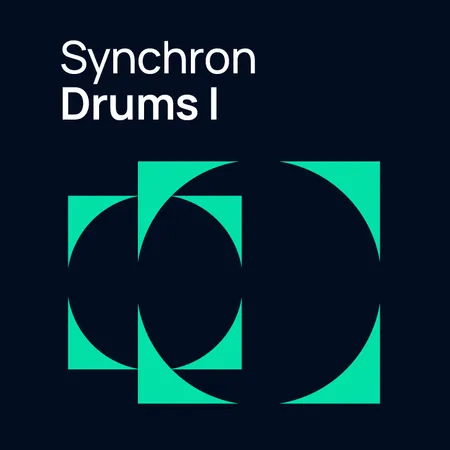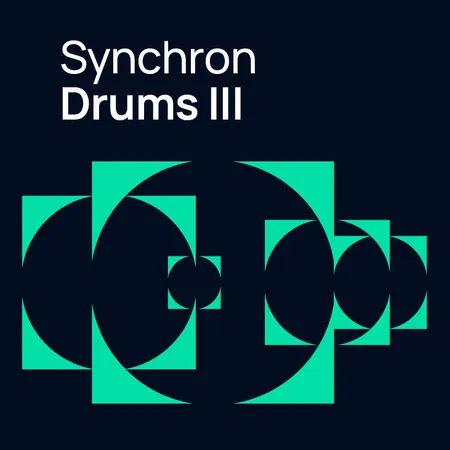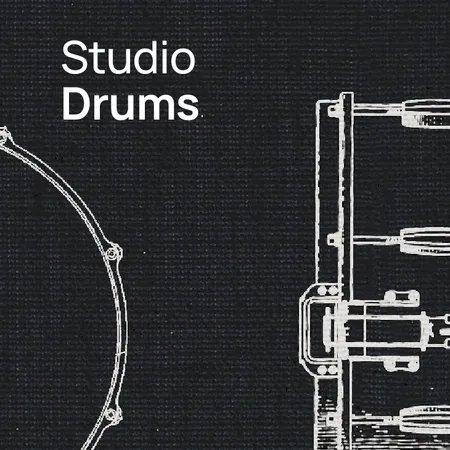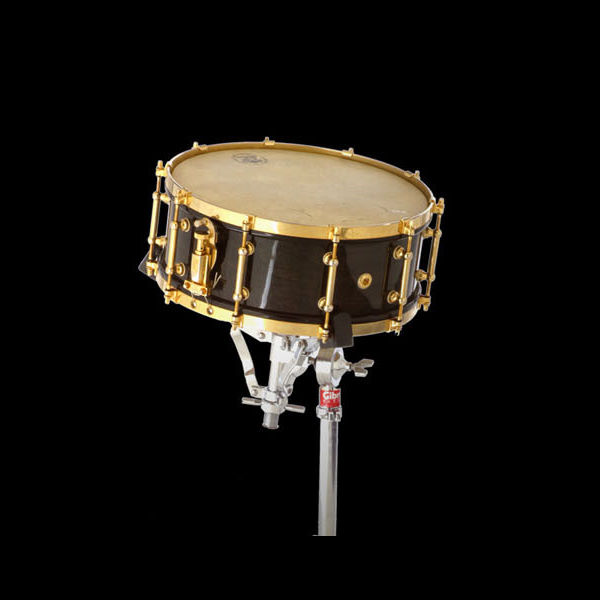
Name: Snare drum, side drum
Spelling
German: Kleine Trommel
French: caisse claire, tambour petit
Italian: cassa chiara, tamburo piccolo
Classification: Percussion instrument, membranophone with indefinite pitch
Shell (corpus): Metal or wood, more rarely plywood or plastic; cylindrical, depth 12–19 cm
Head: Batter head, snare head. Material: calfskin or plastic; Diameter 35–38 cm
Snares: 8–18 strings of gut, metal, metal-wound nylon or silk
Tensioning mechanism: Snare release lever to tighten or lift off the snares
Sticks: Wood drumsticks of hard wood (Brazil-wood, hickory, ebony, lancewood) with round or oval tips; length approx. 36 cm.
Stand: Height and angle adjustable
In most cultures, the drum in its various forms is the most important and rudimentary percussion instrument. Today when we talk about drums, we generally mean percussion instruments with one or two heads (membranophones). In the western world, drums with a cylindrical shell are most commonly used.
The side drum, or snare drum, is the smallest of the cylindrical drums and is found in practically every type of western music from military music (where its roots lie) to jazz or the drum kits of rock and pop.
At the same time the snare drum is a crucial member of the orchestral percussion section. As with all drums, the snare drum has no definite pitch, or at least a pitch which is only barely discernible (the tuning of drums has occasionally been required by 20th century composers). Its relatively high register means that it covers more or less the treble register within the orchestra percussion section (which also consists of the tenor and bass drums).
The snare drum is also known as the side drum because it was originally played in military bands where it hung at the drummer's left hip and was beaten from the side – as indeed it still is in marching bands today.
The shell of the military side drum used for marching can be up to 30 cm deep and is therefore a little bigger than the instrument played in the orchestra.
Discover our Snare drums
Medieval Europe was home to an enormous variety of drums, most of which had originated in the Orient. The most widespread forms were the frame drum and the timbrel, a forerunner of the present-day tambourine. The frame drum consisted of a rectangular or circular wood frame with a head; the underside was open. The main difference between the frame drum and the timbrel was the presence of the jingles that were attached to the latter's shell. While the timbrel was still struck with the flat of the hand in the Middle Ages, like its predecessor in antiquity, an additional, one-handed technique was emerging for the frame drum: traveling minstrels used it mostly to accompany the single-handed pipe and hung it to one side on a strap over the shoulder, where the musician struck it with a beater while playing the pipe with the other hand.

*Frame drum (from: Praetorius, Syntagma musicum, 1620)*
Evidence of a forerunner of the snare or side drum in Europe exists at least from the 14th century in the form of the tabor, a small, double-headed drum with a cylindrical shell of wood and one or more snares stretched across the batter head. The calfskin or sheepskin heads were rope tensioned, the ropes criss-crossing between the hoops of the batter and snare heads. The drum hung at the side of the “player of the pipe and tabor” who beat the rhythm with a drumstick while playing a melody on the single-handed pipe with the other hand. The minstrels' drum had to be fairly light and easy to carry because it hung over the player's forearm, and for this reason it was rather small and not very loud.
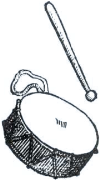
*Tabor (from: Praetorius, Syntagma musicum, 1620)*
In the Middle Ages there were no standard names for drums. The oldest appellation was probably the Latin tympanum, which originally described flat frame drums but in the later Middle Ages was used for every drum-like instrument (including timpani). In addition to this the term tabor (German tambur, French tabour, tambour) became widespread. In German-speaking countries the onomatopoeic name Trommel (from the Old High German trumme, trumbe = booming instrument) appeared in the 12th century and initially described both membranophones and trumpets. It is from this term that the English word drum (drome, drume) evolved which replaced the name tabor in the 16th century.
In the 14th century the practice of one man playing both pipe and drum ended, the instruments being played henceforth by two musicians. This separation was a consequence of the way the two instruments were evolving: the pipe's compass was increased, making it necessary to use both hands to play the instrument, and the relatively soft-sounding tabor was made larger to increase its volume, which was a requirement particularly of military music. The result was the side or field drum.
The history of the town of Basel in Switzerland records the existence of an “Association of Drum and Fife” as early as 1332. The members of this “guild” were important figures at public festivities.

*Lansquenet drum ("Soldiers' drum", from: Praetorius, Syntagma musicum, 1620)*
In the course of the 15th century the drum that was struck from the side became ever larger and ever louder to meet the changing requirements of military bands. It became too large to be hung over the forearm and was now attached to a strap over the drummer's shoulder or tied to a belt around his waist. The widely known “Swiss” drums became the model for drum-makers all over Europe. The small tabor remained in use as a folk instrument while the new, large drum became an important instrument with lansquenets (German foot soldiers). It is for this reason that the side drum is sometimes also called the field drum, or, in historical contexts, the lansquenet drum (tambour de lansquenet) or long drum. “Fife and drum” symbolized the common foot soldiers, while trumpets and kettledrums represented the cavalry.
The field drum was between 50 and 70 cm deep (some models were as deep as one meter) and had a diameter of 50 cm. It was beaten with a pair of heavy sticks. From the 16th century the snares were stretched across the lower skin, the snare head.
The field drum's main task was to give signals and mark the marching rhythm. Single and double beats and rolls were already standard playing techniques. In the 17th and 18th centuries the field drum continued to evolve within the context of military bands. One of the principal aims was to reduce its dimensions, especially the depth of the shell, while retaining the volume.

*Basel drum*
This smaller version of the field drum is nowadays called the Basel or parade drum. The drums used by the distinguished Basel Drum Associations still have the original form, the head tensioned extremely tightly by criss-crossing cords to produce a bright tone. The Basel drumming style has a long tradition in which bounces and virtuoso embellishments play an important role. On contemporary models of this drum the head is tensioned with screws.
When in the mid 18th century the bass drum and Turkish drum arrived at the courts of European princes with Janissary music the depth of the side drum's shell had already been reduced to 40–45 cm, its diameter to 40 cm. The body, previously made of wood, could now also be brass.
In the 19th century the drum's dimensions were reduced to a shell depth of about 40 cm and a diameter of 40 cm, in other words, the depth now corresponded to the head diameter. Such drums became widespread in many countries. English speakers called it the military snare drum, Germans the Militärtrommel, the French the tambour militaire and the Italians the tamburo militare. This drum is still used in military bands today.
At the same time manuals on the basics of drumming began appearing in Europe and the USA. In addition, drummers in military bands had to be able to play a large number of signal calls which with orders were passed on to the troops in a coded drum pattern. In the 19th century bugles took over this task. Drums were also used as signaling instruments in shipping and navigation, and, albeit rarely, in civilian life.
100 years later than the timpani – in the second half of the 18th century – the side or field drum appeared in the orchestra for the first time, under the name tambour: Georg Friedrich Handel and Christoph Willibald Gluck used the instrument in their Fireworks Music (1749) and Iphigenie auf Tauris (1779) respectively. But drums have never achieved the same importance as timpani in the orchestra and their chief province remains marching music to this day. Because the drum had often been used in the midst of battle its first tasks in the orchestra were to evoke a military atmosphere, as in Josef Haydn's Military Symphony (1794). Ludwig van Beethoven gave the drums authentic tasks in his battle symphony Wellington's Victory (1813), giving each of the armies its own drum signal.
The drum was used more extensively in the opera orchestra, e.g. by Gioacchino Rossini, who even used it as a solo instrument in his opera The Thieving Magpie (1817), which earned him the nickname “Tamburossini”.
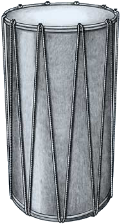
*Tambourin (tambour provençal)*
Beside the tambour – in historical scores this refers to whichever form of the side drum was in use at the time – an instrument with the name tambourin enjoyed huge popularity especially in 18th century French opera. This was a drum played with one hand and made of very light wood, with a shell about 70 cm deep and a single head. Direct descendants of this tambourin or tambour provençal are still used today in folk music in southern France. The instrument should not be confused with the tambourine with its jingles.
In 1837 the Englishman Cornelius Ward was a central figure in the invention of screw tensioning, which rapidly replaced rope or cord tensioning. This innovation meant that the snare drum could now be even flatter: the shell depth was reduced to 20 cm, in some instances even to 10 cm.
In the second half of the 19th century flat drums with a larger diameter (approx. 35 cm) than shell depth were adopted as rhythm instruments by salon orchestras, dance bands and jazz ensembles. At the beginning of the 20th century this small version became generally known as the snare drum or side drum. The best-known orchestra piece in which the snare drum plays a vital role is Maurice Ravel's Boléro (1928).
At the beginning of the 20th century the snare drum was already an essential component of jazz percussion. The influence of jazz brought a host of innovations to the snare drum's construction and playing techniques.
The hoops, which until the end of the 19th century had been made of wood, were replaced by metal ones. In 1898 the percussionist Ulysses Grant Leedy made the first adjustable stands for the snare drum. In about 1914 Robert Danly invented the snare strainer to lift off the snares, making it possible to produce a kind of tom-tom effect on the snare drum. In 1957 the first drum with a synthetic head appeared on the market. Because of its resistance to changes in temperature and humidity – it is waterproof, robust and cheap – the plastic head proved a huge success in popular music, whereas orchestra musicians preferred to continue with natural heads, which, for the most part, they still do today.
20th century composers expanded the snare drum's range of tasks: beside its traditional rhythmic function, which became more complex and varied, tonal aspects gained importance. Moreover, the drum was also used as a solo instrument. Efforts to find new timbres resulted in experiments with the striking spot and various types of stick. Ultimately new techniques such as striking the rim, or the rim shot (striking the head and the rim at the same time) or playing with wire brushes were able to establish themselves in more recent orchestral works.

- 1 Tensioning mechanism
- 2 Snare release lever
- 3 Shell
- 4 Tensioning brackets
- 5 Counter hoop
- 6 Tensioning screw
The shell of the snare drum is relatively shallow and is generally made either of wood or metal. Plastic is only rarely used.
On the underside of the shell there are grooves for the snares. These are called the snare bed. When the strings are stretched taut they are pressed into these grooves, which improves their contact with the head.
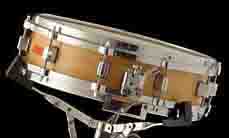
The tensioning mechanism for the snares is on the side of the shell: the percussionist tightens or loosens the strings with a lever, so that they are either pressed against the head or lifted off of it. In addition, the lever is fitted with a screw which allows precise adjustment of the string tension.
The shell always has a small hole for pressure compensation of the enclosed air when the drum is struck.
Extremely shallow versions of the snare drum have become known as piccolo snare drums.
Over both openings of the cylindrical shell a head of calfskin or plastic is stretched. Plastic heads are either clear or coated. The batter head is at the top of the drum, the snare head at the bottom.
The heads are stretched over a flesh hoop, which has a slightly larger diameter than the shell. A counter hoop placed on the flesh hoop is screwed with long screws or threaded rods to the tensioning brackets which are mounted approximately in the middle of the shell. Rope or cord tensioning, as on the medieval side drum (field drum), is rare today. In order to produce a good tone the heads, which must not be too thick, must have an even tension over-all.
To produce a tone with indefinite pitch the head must meet two criteria:
- Thickness: the thicker the head, the more likely the instrument is to develop a definite pitch. To prevent this, the snare head is somewhat thinner and more elastic than the batter head.
- Tension: it must be possible to tune both heads independently. Most drummers prefer the batter head to be more tightly tensioned.
Until the 20th century musical opinion dictated that a definite pitch was something to be avoided at all costs. Today, however, the tuning of the snare drum to an exact pitch is occasionally required.
The snares, of which there are usually 8–18, are stretched across the snare head and are primarily responsible for the instrument's crisp sound. What the snares are made of depends on how and where the drum is employed or from where it originated:
In military bands, gut snares are often still preferred for their precise and snappy sound.
In jazz, rock and pop music, wire coil snares create a buzzing and diffuse impression. The snares on orchestral drums are somewhere between these two extremes, being made of silk or nylon wound with metal, although there is currently a tendency to revert to gut snares.
Taut snares containing metal are very susceptible to sympathetic vibration in the orchestra, and can vibrate from the sound of other instruments (such as the horns, or the timpani, which are often close to the snare drum). To prevent this, the drummer immediately releases the snares (hopefully! -:) when the instrument is not being played.
For playing, the snare drum is placed on a firm stand, the height and angle of which can be adjusted.
The snare drum is usually beaten with special drumsticks: these are thin, tapering to the tip, about 36 cm long, made of hard wood and have round or oval tips. Oval tips are sometimes covered in plastic.
In military music it is customary to use relatively thick and heavy sticks, whereas in jazz, thin and light sticks are preferred. Orchestral musicians choose their sticks according to the requirements of the work to be performed.
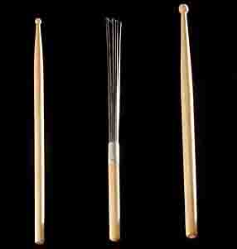
Snare drumsticks. Far right: a field drumstick for comparison
Occasionally other sticks are used on the snare drum:
Wire brushes: striking or brushing with one or two brushes. This practice is very common in jazz (on drum kits) Small timpani mallets: produce a short, dead tone and are generally used with the snares off. Hard felt mallets: when the snares are released these mallets produce a precise, coarse sound. Marimba beaters: when the snares are released these beaters produce a dark sound.
Since the 20th century the snare drum part has been written on a single line with no clef. This type of notation became standard because the drum has no definite pitch.
As a rule, the snare drum is played with tightened snares, and this is not indicated in the score. What is explicitly written into the score is the composer's instruction to play snares off (German: ohne Schnarrsaiten, French: sans timbre, Italian: senza corde). In historical scores playing without snares is often indicated by the instruction muffled (German: gedämpft, Italian: coperto).
Tied trills, press rolls and open rolls are notated as if they were either tremolos or trills.
When a trill (or tremolo) occurs in the score the drummer's decision of whether to play it as a tied trill, press roll or open roll is dependent on the tempo. At a fast tempo with two strokes in rapid succession a tied trill is always played; press rolls or open rolls are more suitable for longer rolls.
In older works the snare drum part is usually written in treble clef on the C5 line.
In works from the mid 19th century onward a tambour militaire is often asked for. In the orchestra such parts are usually performed by a snare drum tuned to a lower pitch (or a tenor drum), because the military snare drum with its somewhat deeper shell is often not available. If both a tambour militaire and a caisse claire are required in the same part, two snare drums of different sizes or with distinct tunings are used.
The snare drum is beaten with two drumsticks, held one in each hand. Unlike the timpani, striking the head of the snare drum does not produce a definite pitch, or at least one that can only be determined with difficulty.
It is the construction of the drum that causes it to have no definite pitch. Heads are stretched across both ends of the shell. The vibrations stimulated by striking the head are magnified by the resonance of the shell and the air inside it. They cause the snare head to vibrate and this reacts both on the batter head and outwardly. The sound contains a great many inharmonic partials in close proximity to each other and this results in a sound which has very much the character of noise. Because the two heads have neither same degree of tension, nor the same thickness, the batter head and snare head vibrate at different rates which contributes to the indistinctness of pitch.
There is always a small hole in the shell that acts as a vent, preventing a build-up of excessive air pressure inside the shell.
The striking spot, the point on the head that produces the best sound, is more or less in the center of the batter head (unlike the timpani, where it is about a hand-width from the rim). The nearer the rim the head is struck the less volume of sound is produced on the snare drum and the less discernible its fundamental pitch – the upper register dominates. It is for this reason that the drummer plays nearer the rim to achieve decrescendo and piano effects.
Compared to the bass drum the snare drum's resonance is very short, owing to its smaller dimensions. The drum's small resonant chamber means that its pitch is relatively high, somewhere in the region of one octave above middle C. The hard drumsticks produce a particularly bright sound.
Traditional grip, which developed in the Middle Ages, when the drum rested at an angle on the marching drummer's left hip and was struck from the side:
The right hand holds the drumstick like a timpani mallet and beats straight up and down. The left hand makes a sweeping movement, the drumstick rests in the cleft between the thumb and index finger and on the bent ring and little fingers, while the tip of the middle finger holds the stick steady on the ring finger.
Today the drum is usually placed on a stand, and is only rarely played hanging to one side from the drummer's shoulder, e.g. in (military) parades. The traditional grip has therefore become less appropriate and many drummers prefer to use the so-called matched grip, holding both sticks like timpani mallets.
The snare drum is generally played with the snares taut. It is the snares that are chiefly responsible for the drum's characteristic sound: the snare head vibrates against the snares, which lie taut across it, causing these to vibrate in sympathy. This results in a metallic-bright, hissing to crisp sound which to the ear sounds about an octave higher than the drum without snares.
More loosely tensioned strings vibrate more than tightly tensioned ones. In addition, the snares vibrate more strongly the nearer the rim the batter head is struck.
In the orchestra the snare drum is placed on a stand. Some drummers prefer to play it seated, others remain standing.
The performance of grace notes (drags and flams), rolls and rhythmic figures of all kinds are part of the snare drum's characteristic repertoire. The bounce – allowing the stick to rebound and strike the head a second time – plays an important role in drumming technique. Such double strokes, which are known as mammy-daddy beats (notation: LLRRLLRR), constitute the basis of a great many playing techniques. Bounces are not used either on the bass drum or the timpani.
Single strokes are very short sounds and are played with either the left or the right hand (L or R) as the drummer prefers.
If single strokes are to be accentuated they are either played more loudly (notated accent) or, very occasionally, with both sticks simultaneously. This is indicated in the score by double-stemmed notes. Single strokes are occasionally played by one drummer on two drums at the same time.
The drummer makes use of the stick's rebound, allowing it to bounce again after the first beat with the same force by applying pressure with the finger. Also known as mammy-daddy beats or rolled grace notes, depending on the context. (LL or RR).
A sequence of single beats is played either with the left and right hand alternately (LRLR) or as a combination of single and double strokes (LRRLRR or RLLRLL), depending on the rhythm, accentuation and tempo. Repetitions can be performed at a very fast tempo up to roll speed. The paradiddle is a kind of rhythmically accentuated repetition.
Are among the snare drum's typical techniques.
Flam:One faint beat is played as a grace note before the main stroke (lR or rL).
Drag:Two faint beats are played as grace notes before the main stroke either as single strokes (lrL or rlR) or as a double stroke (rrL or llR).
Three stroke ruff:Three faint beats are played as grace notes before the main stroke: three alternate single strokes (rlrL or lrlR) or a double stroke plus a single stroke (llrL or rrlR, or rllR and lrrL). At very fast tempos the three grace notes can also be played as a tied trill.
Four stroke ruff:Four faint beats before the main stroke. Possible variations: alternate single strokes (lrlrL or rlrlR) or two double strokes (llrrL or rrllR). At very fast tempos the drummer may choose to play the four grace notes as a tied trill.
This is one of the rudiments of drumming and is used mainly in military music. A rhythmic figure which alternates between a pair of single strokes and a double stroke (mammy-daddy stroke): L R LL R L RR L R LL R L RR etc. This gives the drummer the possibility of lively phrasing.
The drummer strikes the batter head with the drumstick, which he allows to bounce as long as required by the note value. The individual bounces should not be countable or heard as single beats. Multiple ruffs are often played as tied trills.
The supreme drumming technique – a series of strokes which are not perceived as individual beats and are free of accentuation. Rolls can be performed in various ways:
- As a rapid series of tied trills alternating between the left and right hand and overlapping. It is essential that the sound of the drumstick making contact with the head is not heard, which is extremely difficult to master. This type of roll is called the press or closed roll.
- As a series of double strokes (the two-stroke or ”legitimate roll”). This is the traditional roll and is preferred by a number of orchestra percussionists. It is the open roll.
- As a series of single strokes (one-stroke roll). This technique originated on the timpani and was adopted chiefly by rock and pop drummers in the 20th century.
In more recent times, rolls have usually been notated as trills. In older scores they were also notated as tremolos.
The head and rim are struck simultaneously with one drumstick, which results in a cracking noise like a pistol shot. The technique originated in jazz and is extremely difficult to perform with precision.
The drummer places one of the drumsticks on the drum so that the handle rests on the rim and the tip on the head between the center of the head and the rim. This stick is then struck with the other one. This technique is often used instead of the rim shot, which is extremely difficult to perform with precision, although the effect is far less impressive.
The drummer places one of the drumsticks on the drum so that the handle rests on the rim and the tip on the head between the center of the head and the rim. While the tip remains lying on the head the handle is struck against the rim, which results in a clicking noise.
The drummer either strikes the head with the brush or firmly brushes it, which produces a bright rushing sound (in silent films this technique was used to imitate the sound of steam locomotives).
With two brushes beating alternately rapid sequences up to roll speed are possible. This is another technique that entered the orchestra by way of jazz.
Some early 20th century scores contain the instruction ”on the wood” (German: auf dem Holz, French: sur le bois). This was an instruction to strike the rim on the counter hoop, which at that time was still made of wood. Nowadays the wood or metal hoop is struck, or the shell, if this is made of wood.
(German: ohne Saiten, French: sans timbre, Italian: senza corde).
Playing without snares. The sound is similar to the tom-tom, though usually brighter. Felt-covered mallets are often used. The softer the stick when playing snares off and the nearer the rim the head is struck, the more diffuse the sound..
(Muffled; French: voilé)
The batter head is covered with a cloth, a (clean!) handkerchief or an eraser and then struck. This technique is used primarily in funeral marches.
Many composers also wrote ”muted” (damped) in the score when they meant that the snares should be released.
Bright, hard, clear, precise, metallic, shrill, noise-like, sharp, penetrating, rustling, hissing, shuffling, rattling, clattering, dry, cracking.
The sound is dependent on a number of factors:
- The snares: if the snare drum is played snares off it sounds hard, dry, dead and lower-pitched.
- The sticks: if timpani mallets (or marimba mallets) are used the sound is dark and muffled.
- Head tension: if the batter head is braced more tightly, the pitch rises.
- The shell: the deeper the shell, the darker (lower-pitched) the sound.
- The striking spot: generally in the center; the closer to the rim, the quieter the tone.
- Snare tension: the tighter the strings are tensioned, the higher the sound (slight variations only).
The term ”tone” is used when talking about drums even though the instrument does not produce a definite pitch. The snare drum's register is somewhere in the region of one octave above middle C.
Following the attack only a short tone sounds which can last between 0.5 and 3 seconds depending on the string tension. What is then heard, however, is only the vibration of the strings which usually takes the form of a single tone.
The snare drum can be played from very quietly to very loudly and is quite capable of leading an entire orchestra; it can always be heard.
The snare drum's tasks are first and foremost rhythmic (rhythmic sound effects).
Probably the most famous example of this is Ravel's Boléro, in which two drummers lead the whole orchestra and can even reduce the conductor to the status of a spectator! (-:
However, since the Romantic period it has been entrusted with more and more tonal tasks, for instance lending other instruments a sharper edge by brightening their sound. Playing techniques such as tremolos, trills and bow noises produced by the strings can be emphasized by a drum roll, but single notes such as a pizzicato can also be accentuated by the snare drum.
The snare drum's classic task is the roll in build-ups and tutti passages. In addition to this, the instrument has also seen service as a solo instrument in 20th century works such as Ravel's Boléro (with snares) and Bartók's Concerto for Orchestra (without snares).
In the drum group in the orchestra the snare drum brightens the sound. It usually plays rhythmic figures while the bass drum with its dark timbre accentuates the underlying beat and the dark and somber-sounding tenor drum plays the rolls. The drum group is often complemented by the timpani.
The possible combinations of the snare drum with other percussion instruments are of course many and varied. Which combination is chosen depends on the type of effect desired: together with bright and ringing instruments such as the cymbals, triangle, anvil etc. the composite sound is particularly hard. With darker and softer-sounding instruments, the snare drum is often played snares off.
The woodwinds' staccato is accentuated by the snare drum's precise sound.
A sort of blend is achieved especially with the high woodwinds: the snare drum gives the flutes, oboes and clarinets a sharper edge, while its own sound is cloaked.
In combination with the snare drum the bassoon takes on extra brightness, but the two instruments are heard as two distinct lines.
The metallic properties of the brass's timbre are emphasized by the snare drum. There is no blend, however, the sounds remain disparate and are heard as distinct lines.
There is a similarity between the sounds of the snare drum and the trumpet played with a metal mute, since the timbre of the muted trumpet also possesses a high noise level. The effect of the trumpet's noise-like flutter-tonguing is also similar to that of the drum roll.
The snare drum accentuates the strings' staccato, marcato and pizzicato. Because the snare drum is in the treble register this is particularly effective with the high strings.
The noise level of col legno (with the wood) playing and the bowed tremolo is also emphasized, which produces an eerie effect.
Hector Berlioz
- Marche funèbre pour la dernière scène d'Hamlet (1844) (6 snare drums)
Charles Gounod
- Margarethe (1859)
Nikolai Rimsky-Korsakov
- Capriccio Espagnol (1887)
- Sheherazade (1888)
Gustave Charpentier
- Louise (1900)
Giacomo Puccini
- Tosca (1900)
Claude Debussy
- Fêtes (1899)
- Iberia (1912)
Maurice Ravel
- Alborada del gracioso (1907)
- Boléro (1928)
Igor Stravinsky
- Histoire du Soldat (1918)
William Walton
- Façade (1921–23) (snare drum without snares)
Darius Milhaud
- La création du monde (1923)
Carl Nielsen
- Clarinet Concerto (1928)
Charles Ives
- Three places in New England (1931)
Bela Bartók
- Cantata profana (1930)
- Sonata for two pianos and percussion (1937)
- Concerto for orchestra
Edgar Varèse
- Ionisation (1933) for 13 percussionists, piano and sirens
Malcolm Arnold
- Beckus the Dandipratt (1943)
Benjamin Britten
- The rape of Lucretia (1946)
Elliott Carter
- Variations for orchestra (1954–55)
- Concerto for orchestra (1968–69)
George Gershwin
- Porgy and Bess
André Jolivet
- Concerto for Ondes Martenot and orchestra
Luciano Berio
- Tempi concertati (1958-59)
Leonard Bernstein
- Candide overture: (2 snare drums with different tuning)
Michael Colgrass
- 6 unaccompanied solos for snare drum
Bent Lylloff
- Etude for snare drum
Siegfried Fink
- Sonata for snare drum solo
- Drum suite
Nicolaus A. Huber
- Dasselbe ist nicht dasselbe
Mika Marcovich
- Tornado
Giacomo Puccini
- Madame Butterfly (1904) (high pitched snare drum)
Arnold Schönberg
- Moses und Aaron (1932)
Ralph Vaughan Williams
- 6th symphony
Francis Poulenc
- Concerto for two pianos and orchestra (1932)
Edgar Varèse
- Ionisation (1933)
Peter Schat
- Signalement
William Walton
- The Bear (1967)
On this page
- History
- The frame drum and timbrel in the Middle Ages
- The medieval tabor
- Drum names
- Side drum or field drum
- Basel drum
- Military side drum
- Admittance into the orchestra
- Die Kleine Trommel
- New impulses from jazz
- Construction
- Shell
- Heads
- Snares
- Stand
- Sticks & Mallets
- Drumsticks and other sticks
- Notation
- Modern notation
- Notation of tied trills, press rolls and open rolls
- Historical notation
- Sound production
- Attack
- Grip
- Snares
- Playing position
- Playing Techniques
- General
- Single stroke
- Double stroke
- Repetitions
- Grace notes
- Paradiddle
- Tied trills
- Rolls
- Rim shot
- Stick on stick
- Rim click
- Wire brushes
- On the wood
- With released snares
- Coperto
- Sound characteristics
- Sound combinations
- Snare drum + other percussion instruments
- Snare drum + woodwinds
- Snare drum + brass instruments
- Snare drum + strings
- Repertoire (selection)
- Snare drum solo
- Piccolo snare drum
